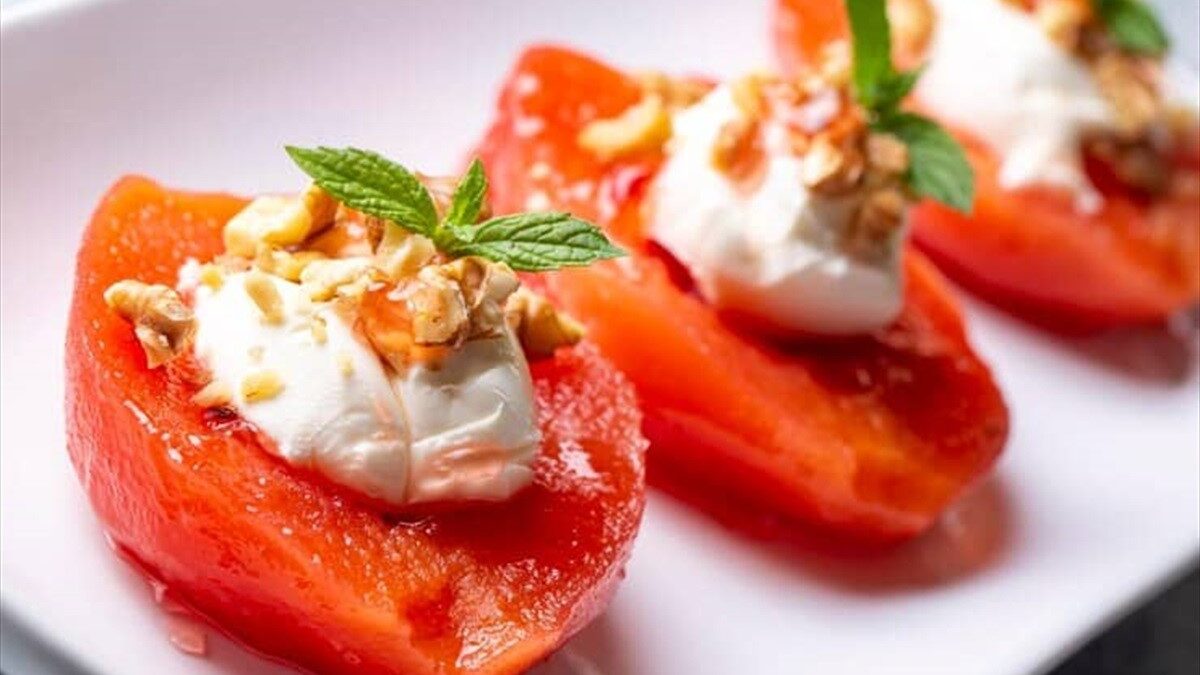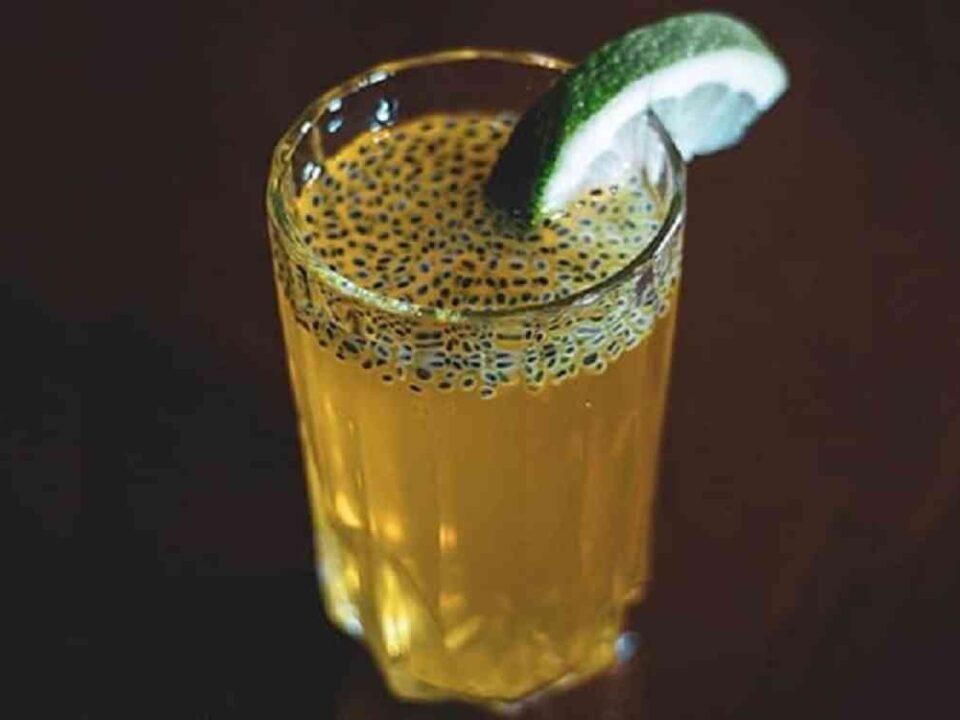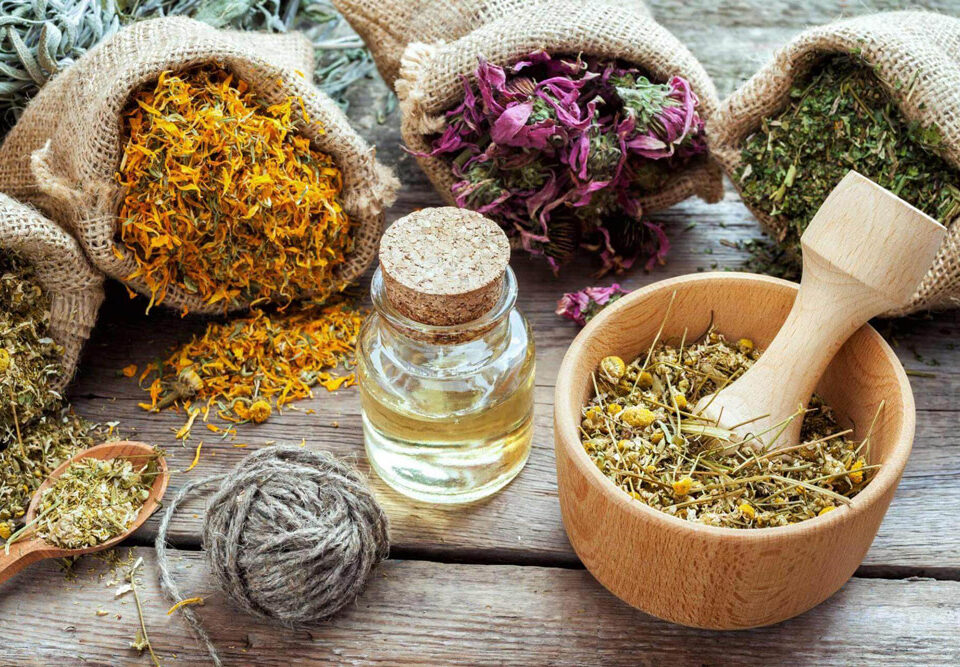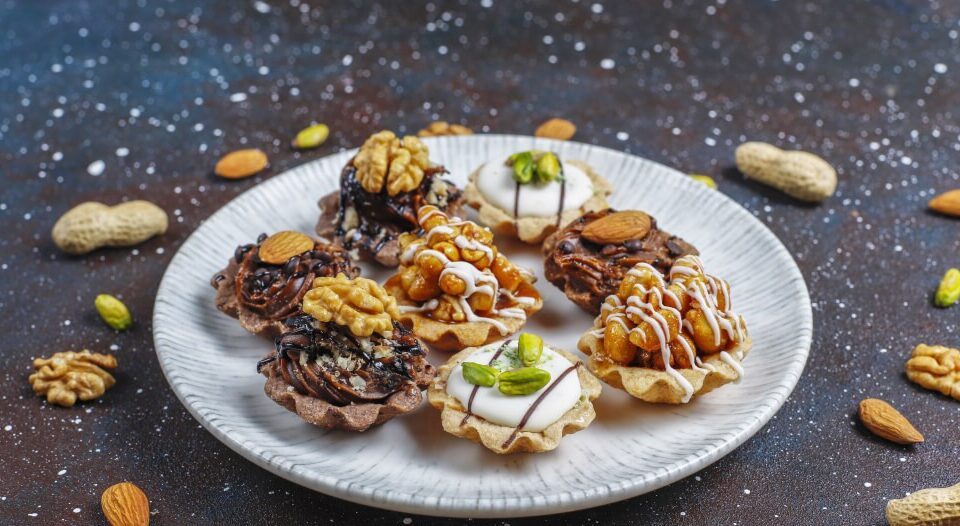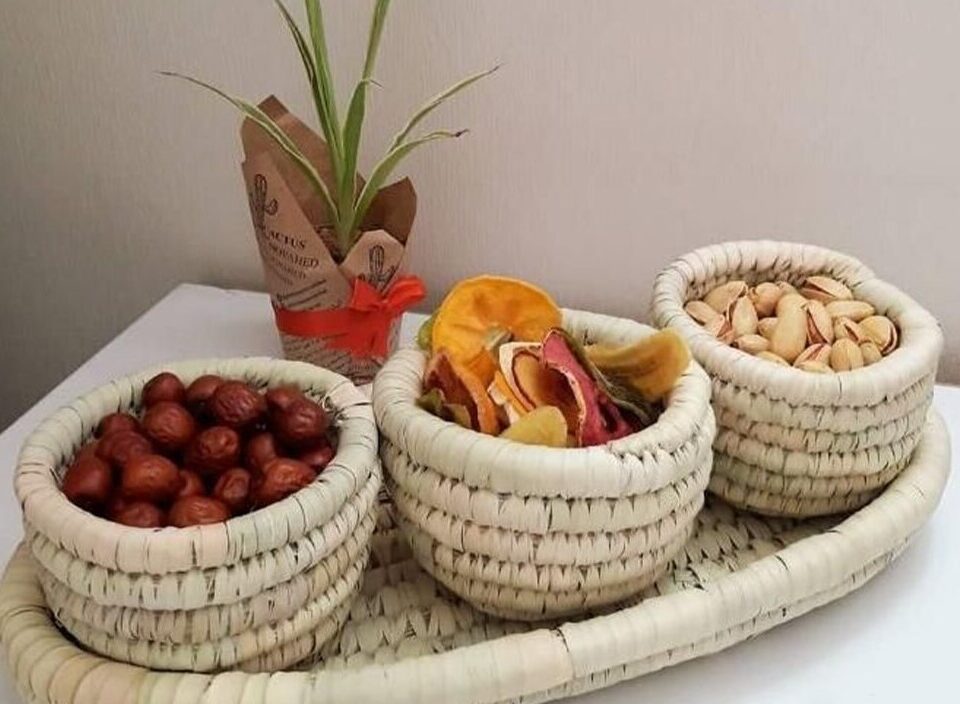
The Role of Nuts and Dried Fruits in Persian New Year (Nowruz)

The Role of Climate in the Quality of Iranian Spices and Nuts
A Guide to Using Dried Fruits in Sweets and Desserts
Dried fruits are an essential part of Iranian cuisine, adding natural sweetness, rich flavor, and a chewy texture to many traditional desserts. These fruits are packed with nutrients and flavor, making them ideal for both traditional Persian sweets and modern dessert creations. Iran is known for producing a wide range of high-quality dried fruits, each with unique characteristics that can enhance the flavor profile of your desserts.
Here’s a guide to the best Iranian dried fruits for making desserts and how to incorporate them into your sweet dishes.
1. Dried Dates
Dates are one of the most popular dried fruits in Persian desserts due to their natural sweetness and versatile texture. Iranian dates, such as Mazafati, Piarom, and Kabkab, are especially prized for their flavor and moisture content, making them ideal for a variety of sweet dishes.
Best Types for Desserts:
- Mazafati Dates: Soft and rich, these dates are perfect for blending into desserts like energy balls or date bars.
- Piarom Dates: With a caramel-like flavor, these dates are excellent for gourmet desserts and can be used whole or chopped.
- Kabkab Dates: Known for their syrupy sweetness, they are perfect for making date syrup or stuffed dates.
Dessert Ideas:
- Date Energy Balls: Blend Mazafati dates with nuts, seeds, and a touch of cocoa powder for a quick, no-bake treat.
- Date and Nut Stuffed Pastries: Fill Piarom dates with almonds or walnuts and wrap them in phyllo dough for a delicious pastry.
- Sholeh Zard: This traditional saffron rice pudding can be topped with chopped dates for extra sweetness and flavor.
Why Dates are Great:
- Dates are naturally sweet, making them a great alternative to refined sugar in dessert recipes.
- Their soft texture blends well into batters and fillings, adding both moisture and flavor.

Saffron Pistachio and Date Bites
2. Dried Figs
Figs have been cultivated in Iran for thousands of years, and their natural sweetness and chewy texture make them perfect for desserts. Iranian Estahban figs are known for their high quality and rich flavor, often used in both traditional and modern sweets.
Best Types for Desserts:
- Estahban Figs: Known for their soft texture and intense sweetness, these dried figs are perfect for baking and cooking.
Dessert Ideas:
- Fig and Almond Tart: Use dried figs as the base for a tart filling, combined with almond paste and a touch of honey.
- Fig and Nut Rolls: Roll dried figs with pistachios and walnuts for a chewy, satisfying snack or dessert.
- Stuffed Figs: Fill dried figs with cream cheese or mascarpone and drizzle with honey for an easy, elegant dessert.
Why Figs are Great:
- Figs are high in fiber and antioxidants, adding a healthy twist to your desserts.
- Their natural sweetness means you can use less added sugar in your recipes.
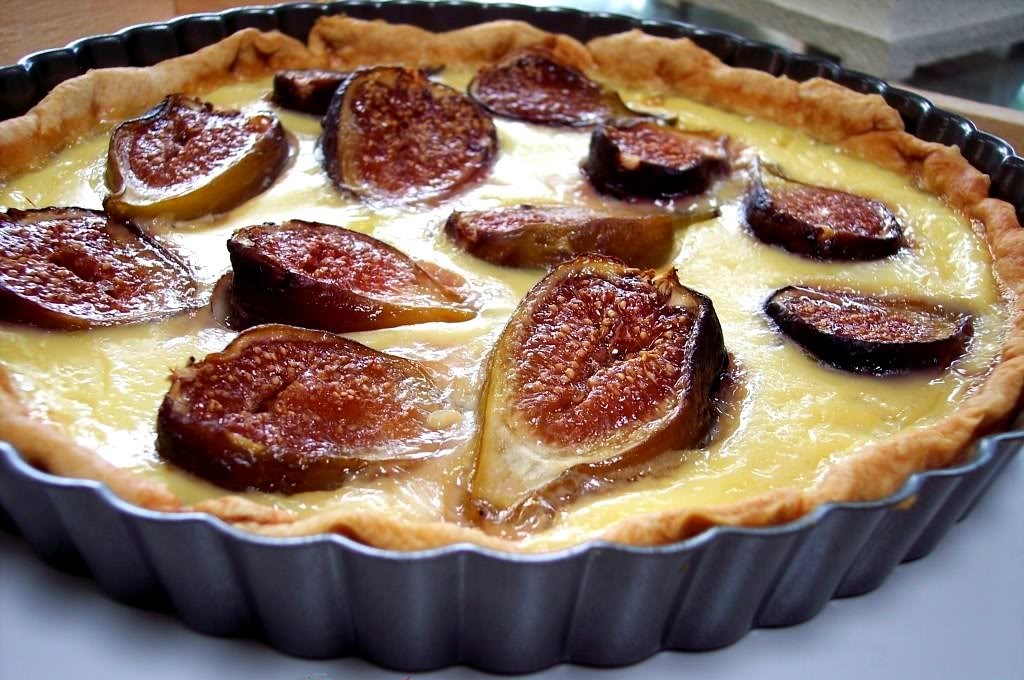
Fig and Almond Tart
3. Dried Apricots
Dried apricots are widely used in Persian cuisine, offering a sweet-tart flavor that pairs well with both sweet and savory dishes. Iranian Zard Alu apricots are known for their vibrant color and intense flavor, making them a versatile ingredient in desserts.
Best Types for Desserts:
- Zard Alu Apricots: These are bright orange, flavorful apricots that work beautifully in desserts like cakes, tarts, and compotes.
Dessert Ideas:
- Apricot and Almond Cake: Use dried apricots as a filling or topping in an almond cake for a fruity twist.
- Apricot Jam: Make homemade apricot jam from dried apricots and use it as a filling for cookies or pastries.
- Chocolate-Dipped Apricots: Dip dried apricots in dark chocolate for a simple yet elegant dessert.
Why Apricots are Great:
- Their bright color adds visual appeal to desserts.
- The sweet-tart flavor of dried apricots pairs well with rich ingredients like nuts and chocolate.
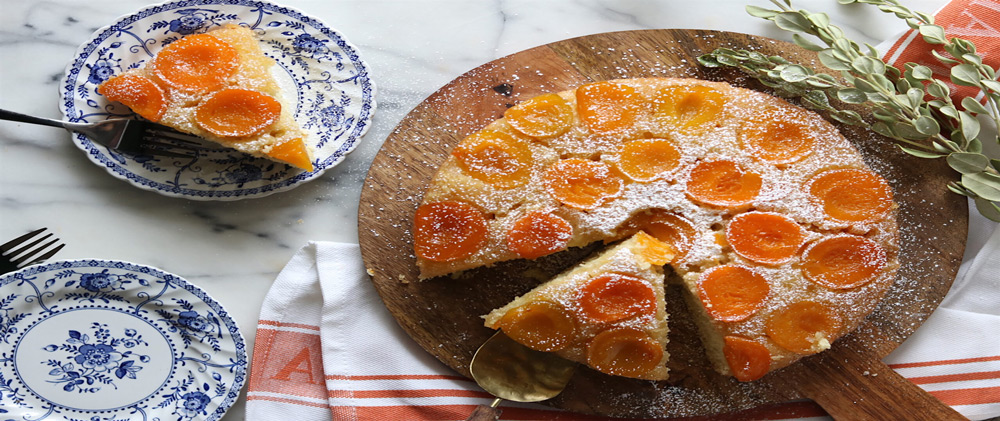
Apricot and Almond Cake
4. Dried Mulberries
Dried mulberries are a lesser-known but highly prized dried fruit in Iran. They have a subtle, natural sweetness and a slightly chewy texture that works well in a variety of desserts. They are often used as a snack or a topping for sweets.
Best Types for Desserts:
- White Dried Mulberries: These are sweet, slightly crunchy, and can be used in desserts or as a garnish.
Dessert Ideas:
- Mulberry Muffins: Add dried mulberries to muffin batter for a fruity, chewy bite.
- Mulberry and Nut Granola: Incorporate dried mulberries into homemade granola for a healthy and sweet treat.
- Yogurt Parfait: Top Greek yogurt with dried mulberries, honey, and crushed pistachios for a light and refreshing dessert.
Why Mulberries are Great:
- They are high in vitamin C and iron, adding a nutritious boost to your desserts.
- Their delicate flavor complements both sweet and savory ingredients.
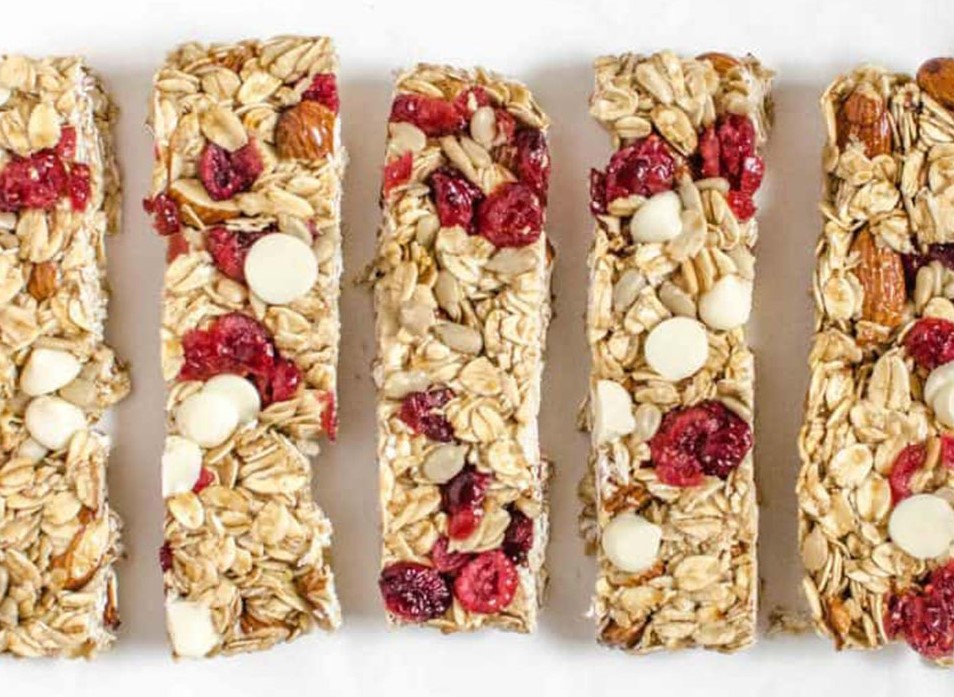
Mulberry and Nut Granola
5. Dried Raisins
Raisins are a staple in Persian cooking and are commonly used in both sweet and savory dishes. Iranian Sultana and Kashmari raisins are particularly known for their quality and are often used in traditional desserts.
Best Types for Desserts:
- Sultana Raisins: Golden, sweet, and juicy, these raisins are perfect for baked goods.
- Kashmari Raisins: Known for their larger size and distinctive flavor, these raisins are ideal for stuffing and mixing into rice dishes or desserts.
Dessert Ideas:
- Raisin Rice Pudding: Add Sultana raisins to rice pudding for a classic Persian dessert.
- Raisin Cookies: Use dried raisins in cookies or scones for added sweetness and texture.
- Raisin and Nut Baklava: Incorporate Kashmari raisins into baklava for a fruity twist on this traditional sweet.
Why Raisins are Great:
- Raisins add moisture and sweetness to baked goods without the need for added sugar.
- Their chewy texture provides a nice contrast in desserts like cakes and pastries.
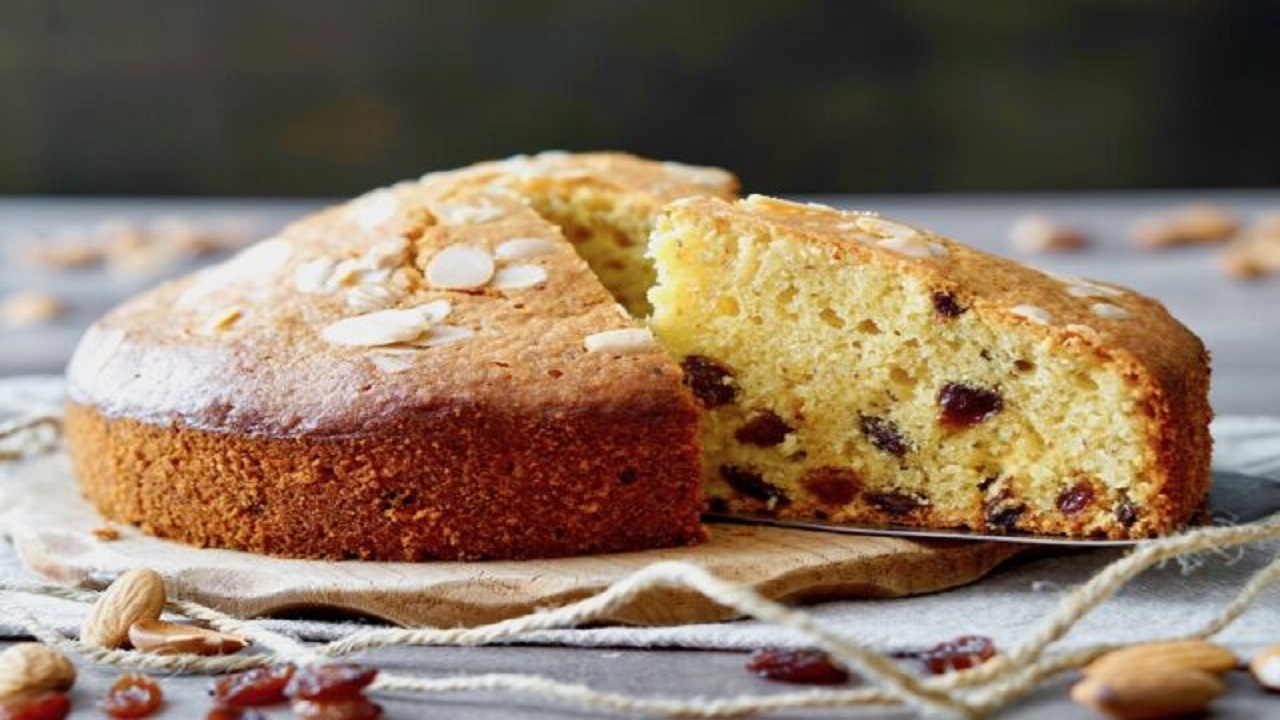
Raisin Cookies
6. Dried Plums (Prunes)
Dried plums, commonly known as prunes, are often used in Persian desserts for their rich, sweet flavor and chewy texture. Prunes are also known for their health benefits, making them a great addition to nutrient-dense sweets.
Best Types for Desserts:
- Shiraz Prunes: Known for their deep flavor and softness, these prunes are perfect for desserts like compotes or cakes.
Dessert Ideas:
- Prune Compote: Make a compote by simmering prunes with water, sugar, and spices like cinnamon and cardamom to serve over ice cream or yogurt.
- Prune and Walnut Cake: Combine prunes and walnuts in a cake for a moist, flavorful dessert.
- Prune and Chocolate Truffles: Blend prunes with dark chocolate and nuts to make decadent chocolate truffles.
Why Prunes are Great:
- Prunes add natural sweetness and moisture to baked goods.
- They’re high in fiber, making them a healthy addition to desserts.
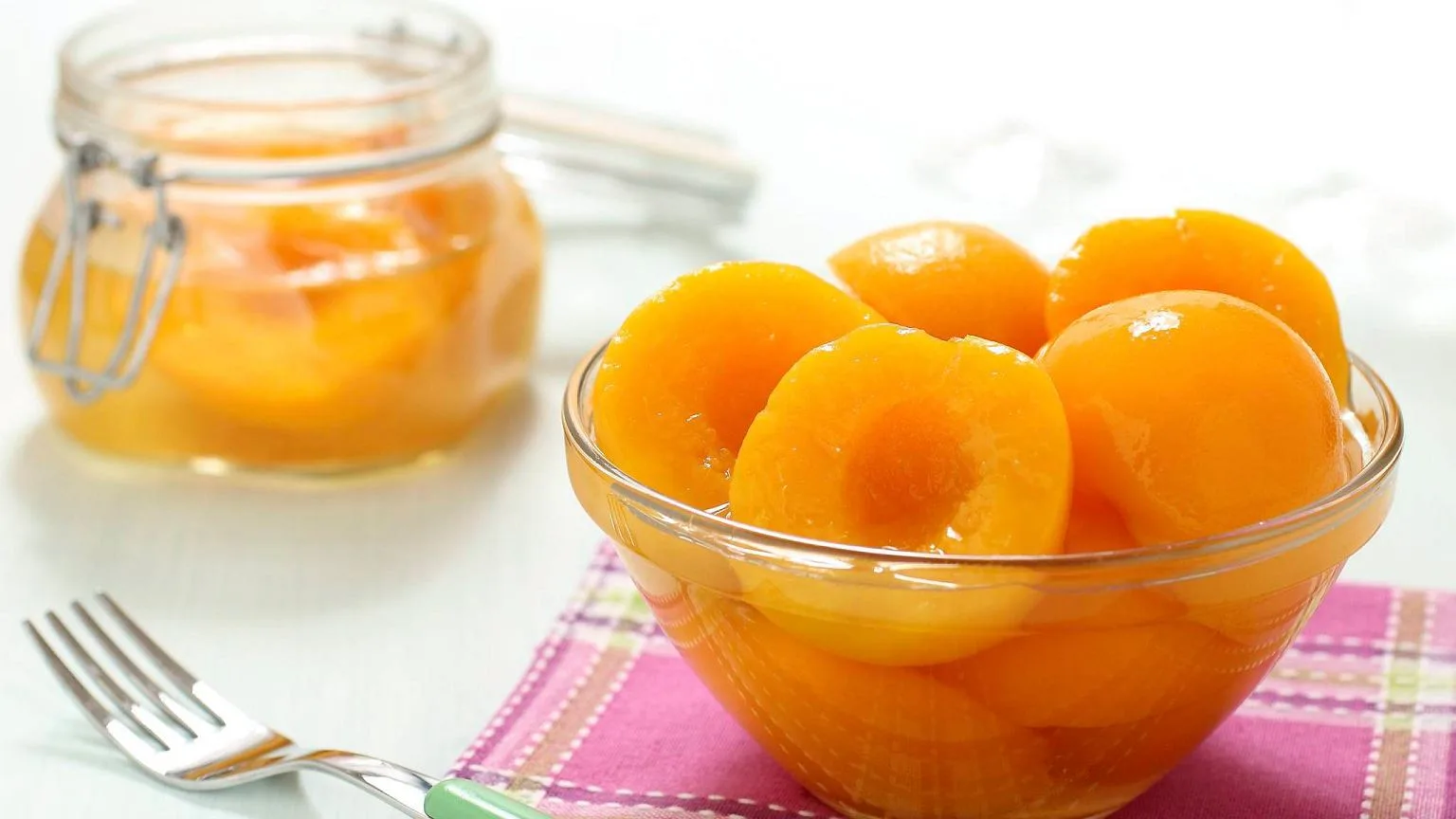
Prune Compote
7. Dried Barberries (Zereshk)
Barberries, or Zereshk, are small, tangy dried fruits that are commonly used in Persian cooking, particularly in rice dishes. However, they can also be used in desserts to add a tart flavor that contrasts with sweetness.
Best Types for Desserts:
- Zereshk (Barberries): Small, bright red berries with a tart flavor.
Dessert Ideas:
- Barberry Rice Pudding: Add barberries to a creamy rice pudding to balance the sweetness with their tartness.
- Barberry and Nut Baklava: Use barberries in baklava to add a unique, tangy twist.
- Barberry Jam: Make barberry jam to use as a filling in cookies or as a topping for yogurt.
Why Barberries are Great:
- Their tartness adds a refreshing contrast to sweet desserts.
- Barberries are rich in antioxidants, making them a healthy addition to sweets.
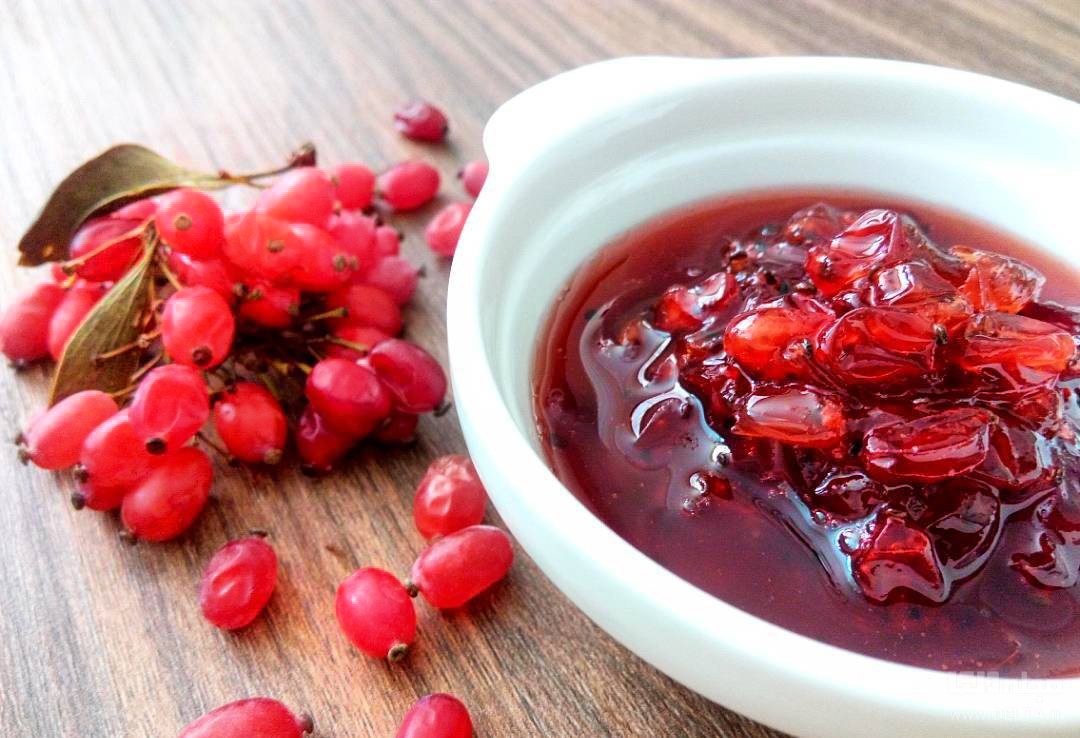
Barberry Jam
Conclusion
Iranian dried fruits such as dates, figs, apricots, raisins, and barberries offer a wealth of flavor and texture to a wide range of desserts. Whether you’re looking to create a traditional Persian sweet or experiment with modern recipes, these fruits add natural sweetness, depth, and richness to your dishes. With their nutritional benefits and versatility, Iranian dried fruits are a perfect ingredient for any dessert lover looking to enhance their sweets with a touch of Persian flavor.

